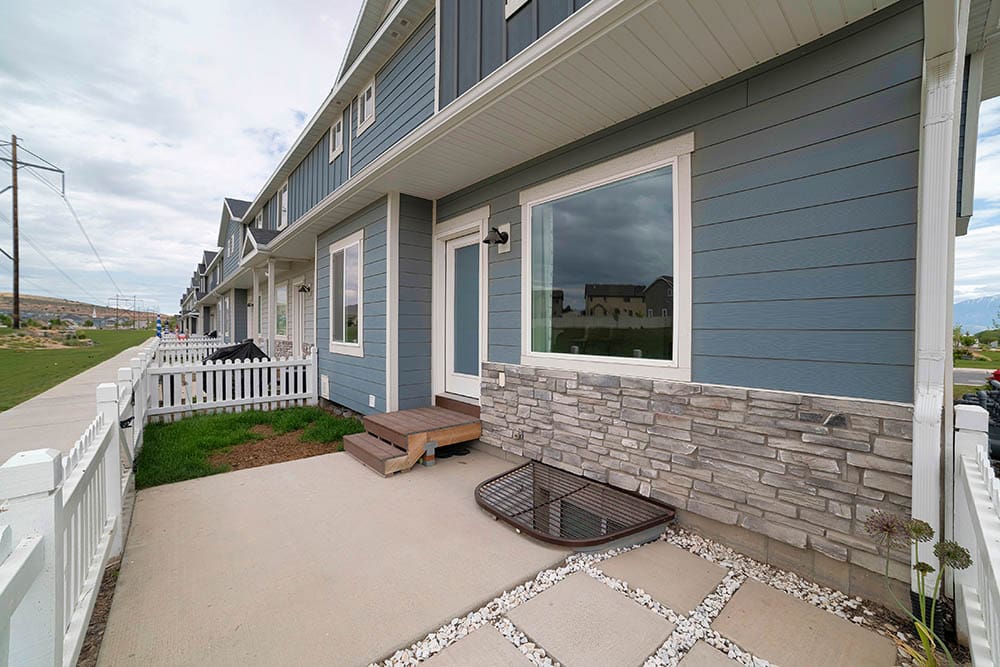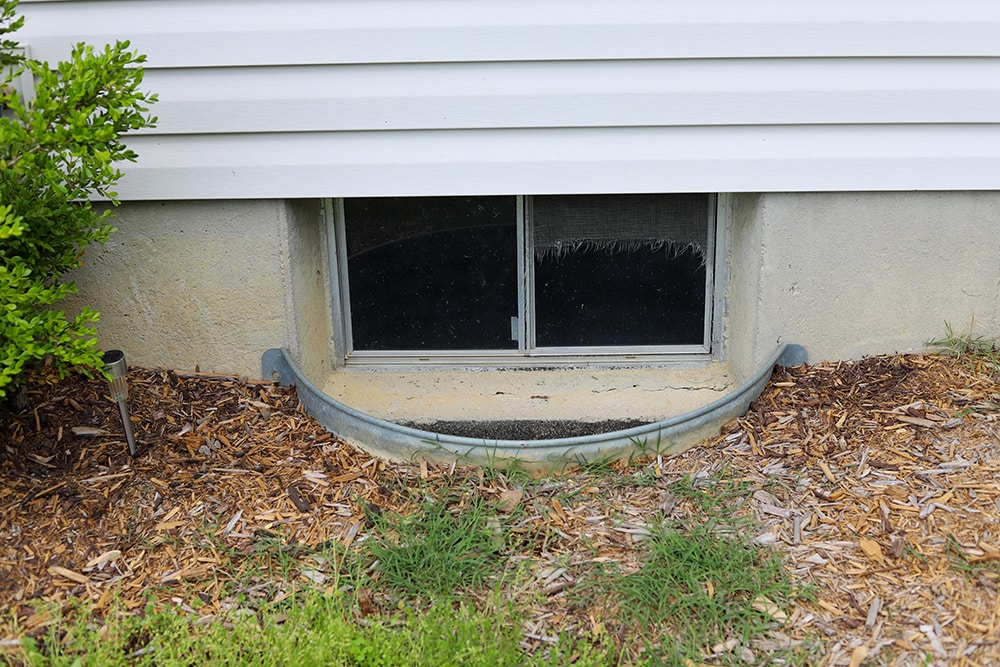What Is a Window Well? Types, Advantages, Disadvantages, & FAQ
-
Pete Ortiz
- Last updated:

You may have heard the term window well before and not know what it is. It is likely that you have even seen a window well without even realizing it. But what exactly is a window well? Many people assume that window well is another term for the window frame or opening where a window goes, but that is not the case. A window well is a very specific feature that is most commonly found in modern basements.
A window well is a circular barrier that is built around a window to hold back earth, mud, water, and debris from covering it. At first glance, they look like circular holes in the ground near a home’s foundation. They are most commonly built around modern basement windows where part of the window lies below the grade or underground. These barriers help protect the basement windows from damage, but they require specific engineering and upkeep to ensure they are working properly.
How Does a Window Well Work?
Window wells have two main parts, the well itself and a drain. The well is an excavated area that is held back by a barrier. The barrier creates a space around the window that is free from harmful materials. However, this empty area is prone to filling with water, so there has to be a professional drain with the well to prevent it from filling with water. Some drains are simple pipes that funnel water away to another area, not dissimilar from the drain in your bathtub. Other drains are gravel or French drains that help siphon the water in the surrounding soil keeping the window dry.
The space created by a window well allows builders and homeowners to have larger windows in their basements than before. Previously, basement windows could only be thin strips of glass because of the soil. Now, window wells mean larger windows. Larger windows mean more egress, which means more legal living space. Larger windows also mean more sunlight, more ventilation, and more visibility than before. All of those features are desirable in a modern finished basement.
With a window well, the soil around the base of your home would eventually shift and cover the basement window. That blocks light, allows bugs and critters into your basement, and can eventually crack and cave the window in.

What Are the Different Types of Window Wells?
Window wells all have the same job, but there are different ways to build a window well. Typically, there are four different types of window wells that you could come across.
Metal
Metal window wells are generally made from corrugated steel or aluminum. They are metal rings that are buried in the ground to help hold back the soil. They are similar to sunken fire pits and fire rings that serve a similar purpose. Metal is lightweight, strong, and relatively affordable. However, metal window wells can be prone to rust which eventually leads to degradation. Metal does not hold up very well when it is buried in the ground for long periods of time.
Plastic
Plastic is the most affordable option. Window wells made from plastic feature a thin, flexible section of plastic that is used as the barrier. Plastic is lightweight, easy to find, and cheap to install. However, plastic is prone to cracking over time. It is the weakest type of window well in general.
Fiberglass
Fiberglass aims to marry the best of both plastic and metal without the drawbacks of either. Fiberglass window wells are lightweight like plastic, easy to deal with, and will not rust and degrade like metal. It is stronger than plastic and can be more durable than metal, depending on the type. Fiberglass is more expensive than plastic and metal, but it has benefits that rival both of those two types combined.
Concrete
Concrete is the strongest and longest-lasting type of window well. A concrete window well can theoretically last forever. Instead of simply sinking a ring of metal or plastic, a concrete window well is poured and built like a miniature retaining wall. Concrete is expensive to have installed, but it offers the greatest peace of mind. Once a concrete window well is properly built, there is nothing that is going to disturb your window.

Where Are Window Wells Used?
Window wells are primarily used in the construction of basement windows. But they can be built anywhere where a window needs to be partially below ground. The most common place to see window wells is in northern areas where basements are common. You can spot them clinging to the perimeter of a house’s foundation. It will look like a hole, or a dug-out area around a visible window.
Window wells can be used in homes, government buildings, skyscrapers, bunkers, and more. Any type of building that is partially below ground and could feature a window could also feature a window well.
Advantages of Window Wells
Window wells allow you to have larger windows than in the past for your basement. Larger windows have many benefits. If you want to have a finished basement count towards your home listing and official square footage, it needs to meet the building code for living space. Living spaces require a certain number of windows, closets, egress openings, and exits to be considered proper. Large basement windows help finished basements meet building codes for livable areas. These larger windows are only able to be installed thanks to window wells.
Window wells protect windows from damage by soil and debris. Window wells also keep your house looking clean and cared for. Basement windows with leaves, dirt and material stacked in front of them hurt a home’s curb appeal. Window wells help keep curb appeal levels high.

Disadvantages of Window Wells
Despite their benefits, window wells have some downsides. First, they require maintenance. You have to keep the window well free of water and debris, meaning you will periodically have to clean them out. Window wells also need to be inspected regularly to ensure that they are not damaged or at risk of failing.
Window wells can trap unwanted things, such as animals or bugs, that will need to be removed. In areas with high levels of rainfall, window wells can also trap water and turn it into a pool which can be extremely detrimental.
Frequently Asked Questions (FAQs)
Do Window Wells Prevent Water from Coming In?
No. Window wells do not prevent water from coming into your basement. They are designed to keep soil away from the foundation of your home and your windows, but they do nothing to keep water out. Window wells should have robust drainage systems built into them to help drain any water that might try and accumulate in the well.

How Do You Drain a Window Well?
If you find that your window well has filled with water, you need to drain it immediately. The best way to drain a window well is with a portable pump or with a shop vacuum. It is critical to get the water out of the well, and then you need to inspect the well to see why the water did not properly drain out. If your basement window is not completely sealed, it can quickly start leaking water straight into your basement if your window well fills up.
How Much Do Window Wells Cost?
Window wells are not cheap to install and usually require a professional. Window wells can cost anywhere from $2,000 to $5,000 to install. That is because it requires careful site work around your home’s foundation, installation of the well itself, and the installation of an effective drainage system. It can be delicate work to dig the wells and ensure that they drain without damaging the home’s foundation or the windows themselves. Generally, window wells are installed in new construction or during a full basement renovation.

Conclusion
If you ever peer out a basement window, there is a good chance you are also looking through a window well. Window wells are engineered parts of a home that keep dirt and erosion from covering basement windows. They are barriers that hold back the surrounding ground to keep the area around the window clear of dirt and debris. They require a lot of maintenance and drainage, but they allow basements to have much larger windows than ever before.
Related Read:
- How Fast Do Wind Turbines Spin?
- Are Wind Turbine Blades Recyclable? How Do You Properly Dispose of Them?
Featured Image Credit: Jason Finn, Shutterstock
Contents


